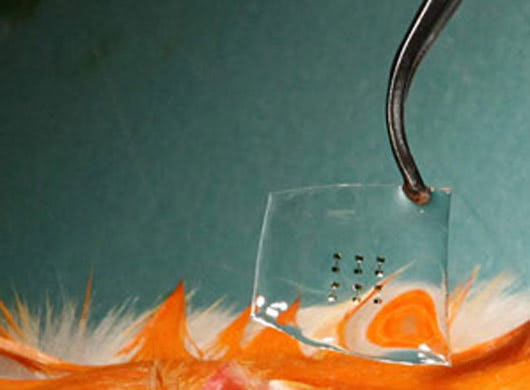![]()
Scientists of the University of Pennsylvania are creating electronics that almost completely dissolve inside the body, through the use of thin, flexible silicon electronics on silk substrates.
While implanted electronics must usually be encased to protect them from the body, these electronics don't need protection. The whole process is pretty much seamless: The electronics on the flexible silk substrates conform to biological tissue. The silk melts away over time and the thin silicon circuits left behind don't cause irritation because they are just nanometers thick.
To make the devices, silicon transistors about one millimeter long and 250 nanometers thick are collected on a stamp and then transferred to the surface of a thin film of silk. The silk holds each device in place, even after the array is implanted in an animal – so far the technique is tested on mice – and wetted with saline, causing it to conform to the tissue surface.
In a paper published in the journal Applied Physics Letters, the researchers report that such circuits can be implanted in animals with no adverse effects. And the performance of the transistors on silk inside the body doesn't suffer.
The researchers are now developing silk-silicon LEDs that might act as photonic tattoos that can show blood-sugar readings, as well as arrays of conformable electrodes that might interface with the nervous system.
Journal Article: Silicon electronics on silk as a path to bioresorbable, implantable devices. Related: Conductive body paint, Phone Tooth, Metalosis Maligna. Image credit: Rogers/Omenetto. Via: Techreview.

Share your thoughts and join the technology debate!
Be the first to comment